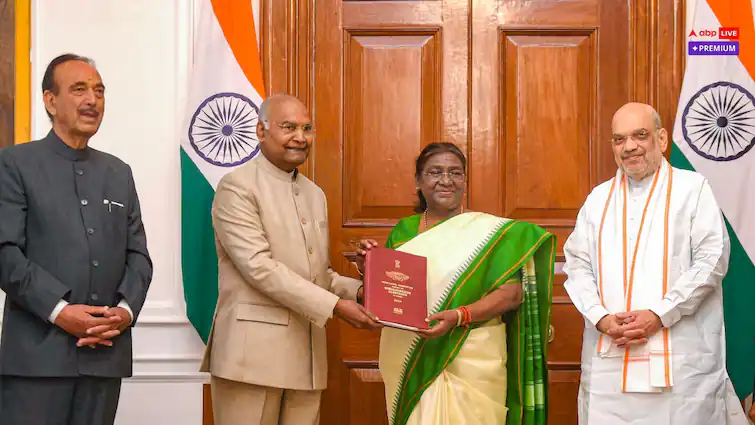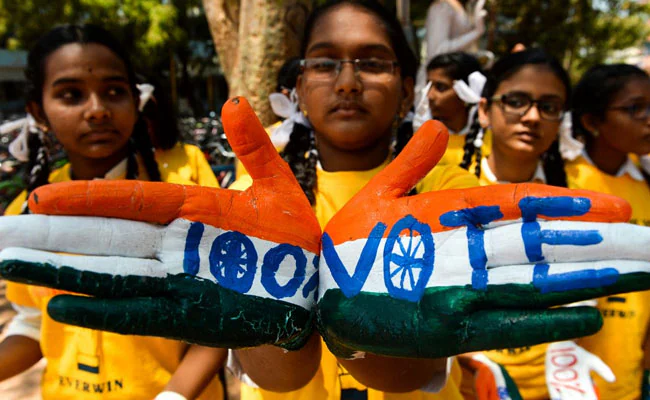One Nation One Election: India, a democratic nation, has held over 400 elections since independence, including Lok Sabha and state assembly elections. While the election process is well-established, there is debate on improving it further. Initially, elections were held simultaneously, but this system was gradually phased out. To address this, the Government of India formed the ‘One Nation, One Election’ committee, chaired by former President Ram Nath Kovind. In September, the Union Cabinet accepted the report and approved bills for its implementation.
Table of Contents
One Nation, One Election: An In-Depth Overview of the Kovind Committee Report
India, a democratic country, has held over 400 elections since its independence, including Lok Sabha and state assembly elections. While the electoral system in India is well-established, discussions about improving the process continue. Initially, all elections were held simultaneously, but over time, this system was phased out. In response, the Government of India formed a committee to explore the feasibility of ‘One Nation One Election’ (ONOE). The committee, chaired by former President Ram Nath Kovind, studied the issue for 191 days and engaged various stakeholders to understand the pros and cons of the concept.
Committee’s Work and Public Consultation
To study the feasibility of ‘One Nation, One Election’, the committee was composed of experts from diverse fields, including law, politics, administration, finance, and economics. Over 191 days, the committee gathered feedback from a wide range of sources. This included political parties, legal experts, Election Commission officials, the general public, business organizations, and economists. The committee also consulted former Chief Justices of the Supreme Court and High Courts to assess the legal and constitutional implications of simultaneous elections.
One of the key methods used to gather feedback was an open call for suggestions through newspapers and social media. The public response was overwhelming, with 21,558 responses received via email, post, and websites. An impressive 80% of these responses were in favor of implementing ONOE, coming from all corners of India, including Lakshadweep, Andaman and Nicobar Islands, Nagaland, and Dadra and Nagar Haveli. Tamil Nadu, Maharashtra, Karnataka, Kerala, West Bengal, Gujarat, and Uttar Pradesh contributed the highest number of responses.

Political Parties’ Responses
The committee also received responses from 47 political parties. Out of these, 32 political parties supported simultaneous elections, citing potential benefits such as reduced election expenditure and improved government stability. However, 15 parties opposed the idea, raising concerns about its impact on federalism, democracy, and regional parties.
Opponents of ONOE argued that simultaneous elections could violate the basic structure of India’s Constitution and harm the country’s federal system. They feared it would marginalize regional parties and could lead to an increased dominance of national parties. Additionally, some political parties feared that simultaneous elections might lead to an expansion of President’s rule, which would be difficult to remove by a no-confidence motion.
Expert Opinions on One Nation One Election
The committee consulted a broad range of experts, including former Chief Justices, former Election Commissioners, and legal experts. Most experts were in favor of ONOE, agreeing that the existing system of holding elections at different times had led to frequent elections, which sometimes resulted in unstable governments, premature dissolutions of state assemblies, and the diversion of government attention from development work.
Experts argued that simultaneous elections could bring stability to India’s political system and improve governance. However, they acknowledged that implementing ONOE would require changes to the Constitution and the country’s election laws. Despite concerns that it might undermine regional parties, experts believed that the electorate in India understands the difference between national and regional issues and can distinguish between national and local elections.
Simultaneous elections: What will be the benefits?
After talking to political parties, experts and others, the committee formed on One Nation One Election concluded that there will be many benefits of simultaneous elections. The committee believes that simultaneous elections will bring a lot of changes in the election process and the functioning of the government.
- A lot of money is spent in elections. Holding simultaneous elections will reduce this expenditure.
- If elections are held simultaneously, more people will come to vote.
- Due to frequent elections, the government’s attention is diverted from development work. By holding simultaneous elections, the government will be able to work without any hindrance and the country will develop more.
- Frequent elections also affect the country’s economic progress. This problem will also be reduced if simultaneous elections are held.
- Companies will also benefit from this because their employees will not have to go to vote in the elections again and again and there will be no interruption in production.
- Workers, especially migrant workers, will also benefit from this because they will not have to go to their villages again and again. There will be no reduction in their wages either.
The most important reason is that frequent elections create an atmosphere of uncertainty. This uncertainty slows down government machinery months before each election. Political parties are motivated to make decisions with the upcoming elections in mind. When elections are held frequently, often half of the five-year period is spent in election campaigning.
The committee has said in its report that for a good government, it is important that there is stability in the country. If there is stability, the government will be able to take good decisions and the country will develop rapidly. But if there is instability, the government will be afraid to take any decision and the country’s development will stop.
Concerns and Disadvantages
Despite the many advantages, some parties, including the Aam Aadmi Party and Congress, have raised concerns about the implementation of ONOE. AAP, in particular, has argued that simultaneous elections would weaken democracy and infringe upon the Constitution’s basic structure, as it could institutionalize President’s rule, which is difficult to reverse.
Congress, in its letter opposing the idea, argued that ONOE would undermine the federal structure and parliamentary democracy. They contended that the claim of saving money through simultaneous elections was exaggerated and that people were willing to spend money to protect democracy. The party also maintained that the existing system of elections was more in line with India’s parliamentary system.
The Bahujan Samaj Party, while not outright opposing ONOE, expressed concern about its feasibility in a country as large as India. They suggested that any changes to the election system should only occur after strengthening the existing system. The party emphasized the importance of fair elections, with a focus on transparency and the rule of law.
The Communist Party of India (Marxist) raised objections to the way the idea was being implemented, arguing that it undermined India’s parliamentary system and could weaken democracy.
Logistical Challenges and Constitutional Concerns
Implementing simultaneous elections in a large and diverse country like India poses significant challenges. There are concerns about whether the country has sufficient resources to conduct simultaneous elections across all states and the Lok Sabha. Another challenge is the constitutional implications of changing the terms of the Lok Sabha and state assemblies to facilitate simultaneous elections.
Some critics argue that the system would violate the rights of citizens and the states. If the term of a state’s assembly is altered to accommodate ONOE, it could be seen as a violation of the people’s will. Additionally, changes in the term of the legislative assemblies could infringe upon states’ rights.
There are also concerns about the fairness of the election process. While the committee has asserted that simultaneous elections would not compromise fairness, some fear that this could lead to fewer opportunities for regional parties to contest elections and create an uneven playing field.
The Kovind Committee’s report on ‘One Nation One Election’ has sparked a vigorous debate in India. While the idea has the potential to streamline elections, reduce costs, and improve governance, it also raises serious constitutional, logistical, and political concerns. As India continues to evolve as a democracy, the question remains: Can the benefits of simultaneous elections outweigh the challenges and risks associated with their implementation?
Also read:

